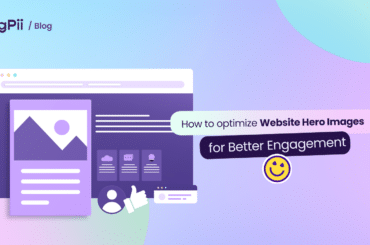It’s an open secret that your product pricing determines your overall profitability and how your brand is perceived in the marketplace.
A high price tag is risky as it can alienate most of your potential customers. On the flip side, a low price tag can eat into your revenue and end up affecting the whole business’s performance.
So, how can you make sure that you get it right?
Enter price testing!
Price testing is when you launch a test to determine the best price for both your business and your prospects.
I get it. Testing your product price sounds like a risky and scary process, but when done correctly, it pays dividends.
In this post, we are going to talk about price testing in great detail – we will discuss about the right time to adjust your price, factors to consider, and how to do it on your Shopify store.
When should you adjust your prices?
There is never a wrong or right time to adjust your prices. Here are some common reasons that can drive people to raise prices:
When the production costs are high
When the production costs of your brand increase, you are more likely to raise the price as a way of offsetting the changes in costs. Suppose the demand for your product increases, production cost is more likely to increase as you will buy more raw materials you need to meet consumer demand. This is to say that an influx of orders can increase production costs which, therefore, results in a change of price.
When there’s inflation
There’s no escape to this one! Inflation is something that impacts everyone. For example, a sudden increase in fuel prices can affect every sector of the economy – and when this happens, businesses raise their prices so that they remain profitable.
To keep up with the competitive landscape
The competitive landscape you are in influences the way you price your products. Suppose your direct competitors raise their prices, you are more likely going to do something about your price – whether increase or decrease – so that you remain competitive. Always keep an eye on your competitors’ pricing strategy so that your business doesn’t lose that competitive edge in the market.
Pricing tactics to consider when testing
When you think of adjusting your prices, here are some of the factors you should keep in mind:
Prices ending in 9, 95 or 99
Charm prices, or prices ending in 9, 95, 99 stoke prospects to act as they make products to appear cheaper than they really are. And such prices often do better when testing.
In one test that looked at how the same items of women’s clothing sold at $35 versus $39, people went for the higher price 24% of the time. [source]
Sale prices—“Was $60, now only $45!”—were able to beat out the number nine. But when the number nine was included with a slashed sales price, it again outperformed lower price points.
For example, consumers were given the following option:
- Was $60, now only $45!
- It was $60, now only $49!
The sale price ending in nine outsold the one ending in five, even though it was more expensive. Apparently, pricing with nines may be an old trick, but it’s still effective.
Free shipping vs. Free returns
In a study conducted by our conversion optimization partner, Invesp, they found that people are willing to pay up to 20% more when offered free shipping.
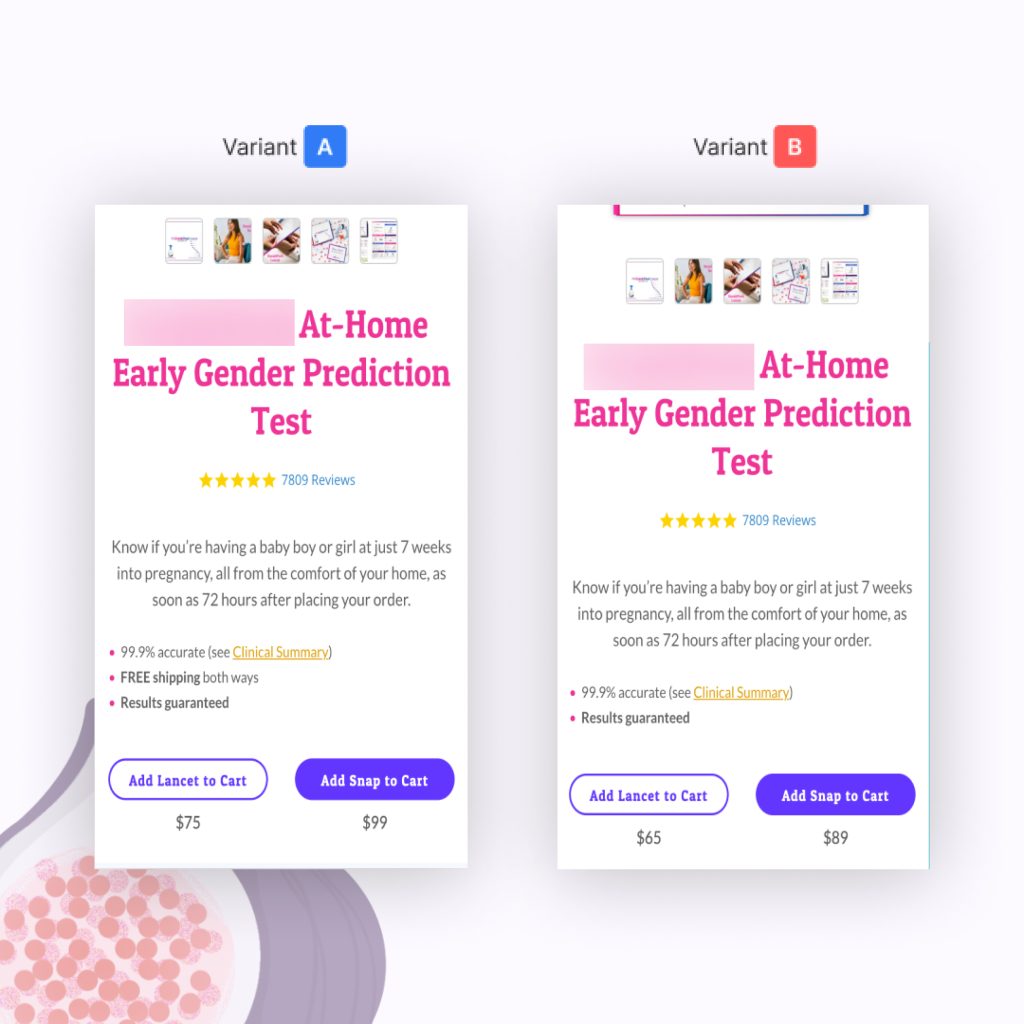
Think about it, when shopping, our favorite sites are the ones that offer free shipping no matter what, with no minimum purchase amount required.
Some tests even indicated that depending on the product, and people were willing to pay up to 40% higher when offered free shipping and free returns or sometimes marketed as free shipping both ways. This is especially the case for products with a higher return possibility.
An example I came across a while ago was a Shopify site that offered a single product, a cool panoramic front mirror for cars.
The product stated that it fits 99% of vehicles, but many users still hesitated to purchase it because the shop owner couldn’t provide pictures of the mirror installed on all car models in the world!
So his solution was to test increasing the product price by $9 and add free shipping both ways; obviously, the variation with the price increase also redesigned the product page to highlight the feature. The results were a 14% increase in conversions and a 40% drop in the number of support tickets asking if the product fits their call.
Create a decoy product with a higher price
One way of encouraging people to spend more on your products is to create a decoy product with a higher price.
Our Suggested Solution
Basically, our suggested solution for implementing your price A/B test is split into three straightforward steps.
1. Install FigPii on your Shopify Store.
You’re going to need an A/B testing engine that works well with Shopify, and as an approved partner with Shopify with our app on Shopify, we suggest using FigPii.
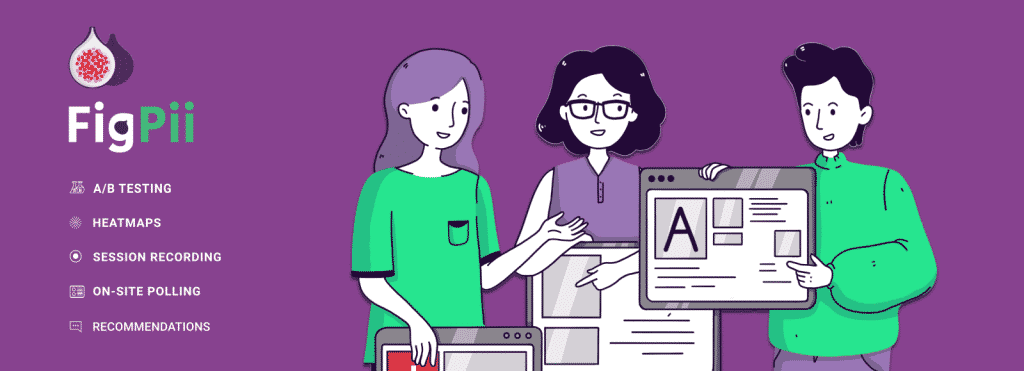
After installing the app, click on Create New Account to integrate your Shopify store with FigPii.
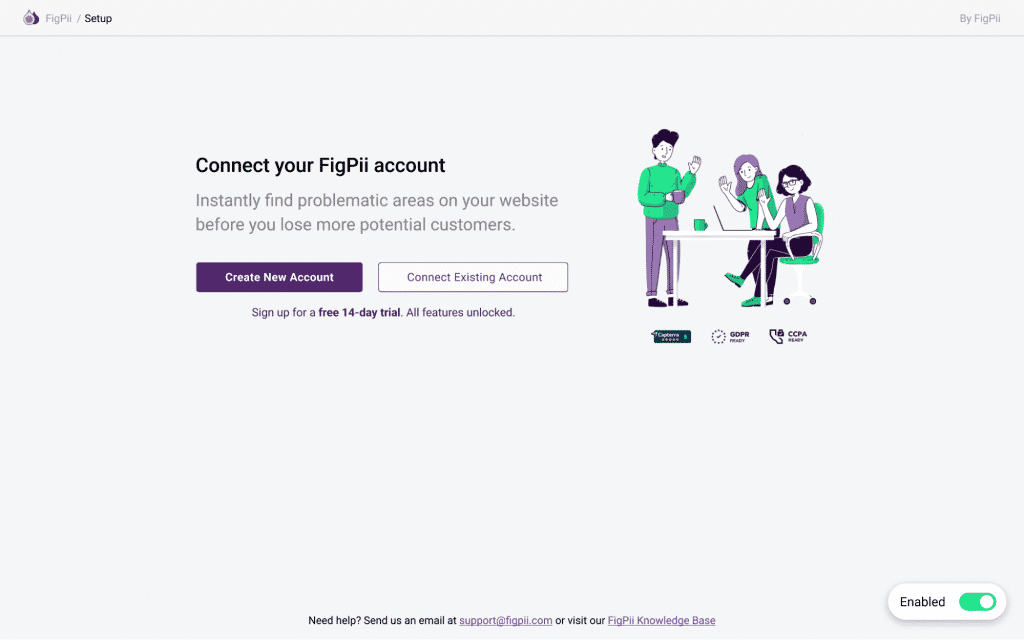
Here you can find a few other options that might work with your store:
Top 10 AB Testing Tools Used By CRO Experts in 2022
2. Add variants to products you wish to test.
To test your new pricing, you need to add a new variant to your product with the new price, don’t worry; your end users won’t be able to switch between old/new prices or see them if you follow our guide.
Steps: [source]
- In the Options section of the Add product or Edit Product page, check This product has options, like size or color.
- In Option name, enter a name for the option, such as Price. Customers won’t see this as we’ll hide it through our A/B test.
- In Option values, enter each option value in a separate field.
- After adding the Option values, set the price for each variation from the Variants section.
- Optional: Add a different product image for each variant. You can also add SKUs and barcodes for individual variants or use the defaults based on the product details.
- Click Save.
2. Setup your A/B test on FigPii
Now, it’s time to set up your pricing A/B test on FigPii. Keep in mind that it’s strongly recommended to do pricing tests for a single product at a time.
Head over to figpii.com/dashboard and click on A/B Testing from the left menu if this is your first time launching an A/B test you will be automatically redirected to the experiment creation page.
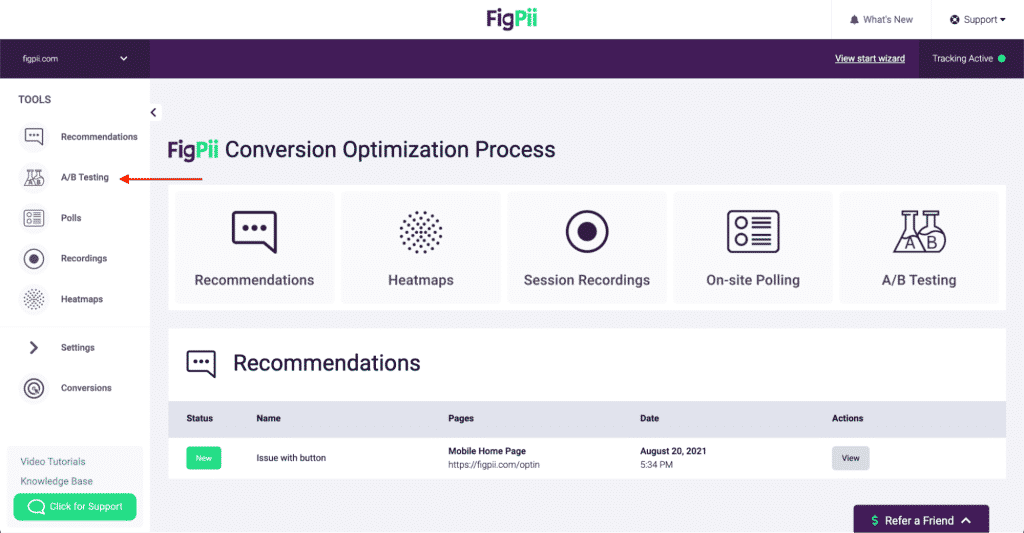
If you don’t see the Experiment creation page, click on Create New Experiment to start setting up your experiment.
The first two steps are quite simple, choose a name for your experiment and AB Test as the Type of Experiment.
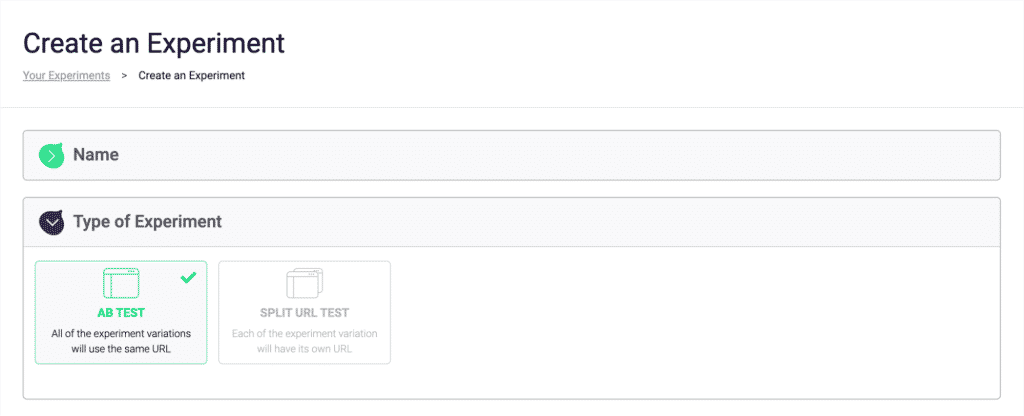
For your experiment’s targeting, based on our recommendation, choose A Specific Page, this is the full URL for the product you wish to test. E.g. https://figpii.com/products/sling-bag
FigPii gives you the option to test on Mobile or Desktop only, or All devices. This decision depends on your preferences, but we suggest All devices so the experience is consistent across all devices for your visitors.
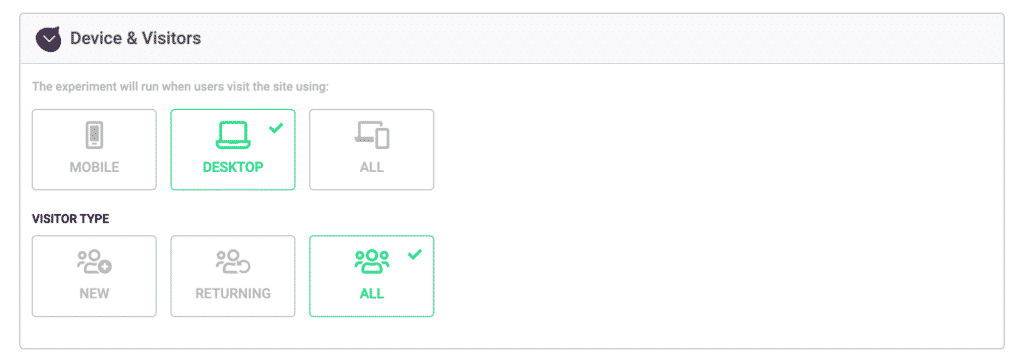
If you followed our suggestion for naming your different variants on Shopify, then you can directly copy and paste the code below for your variation.
In case you gave a different name for the variants you can replace the value highlighted below with the actual name for your variant.
_FJQ( document ).ready(function() {
var optionName = "Price";
var variantName = "Variation B";
variantName = '[value="' + variantName + '"]';
document.querySelector(variantName).click()
_FJQ("fieldset").each(function(){
if(_FJQ(this).find("legend.form__label").text().includes(optionName)){
_FJQ(this).hide()
}
});
});For example, if you had named the new price variant as special and the option name as example, then you’d use the code below:
JS Code:
_FJQ( document ).ready(function() {
var optionName = "example";
var variantName = "special";
variantName = '[value="' + variantName + '"]';
document.querySelector(variantName).click()
_FJQ("fieldset").each(function(){
if(_FJQ(this).find("legend.form__label").text().includes(optionName)){
_FJQ(this).hide()
}
});
});
});To add this code, click on Add Variation under Variations.
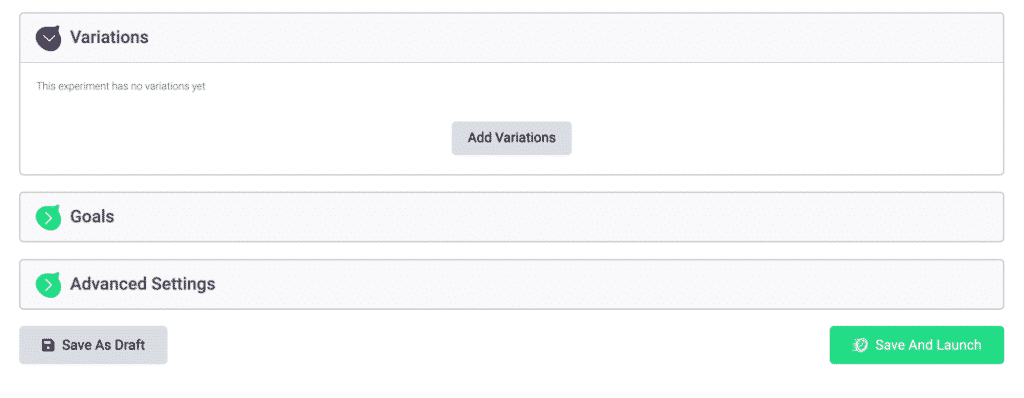
Next, you need to click on Add CSS / JS and paste the values you just copied into the corresponding fields.
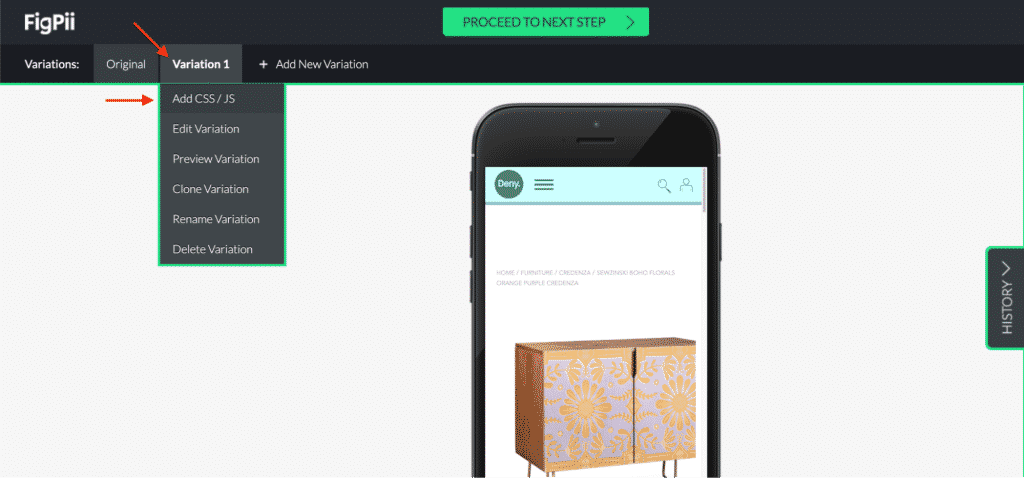
You can Proceed to the next step and launch your experiment, or you can use the preview function to check out the different variations.
Conclusion
Price is directly connected to your product value. If you think you can provide enough value to justify a higher price to your customers, increase it.
If you think you could earn more with a slightly lower price that would attract a bigger market for your product, decrease it.
Just don’t do it on a whim – have a reason, plan, and A/B test it!




